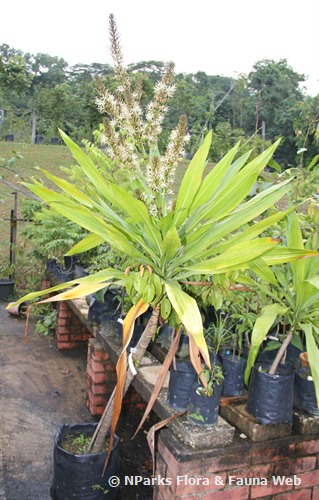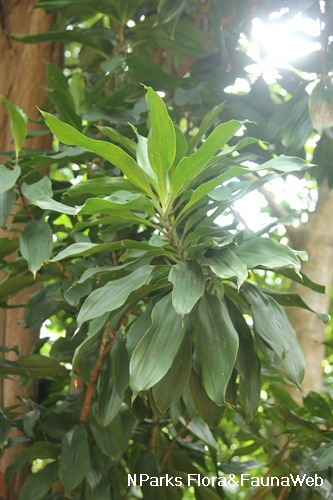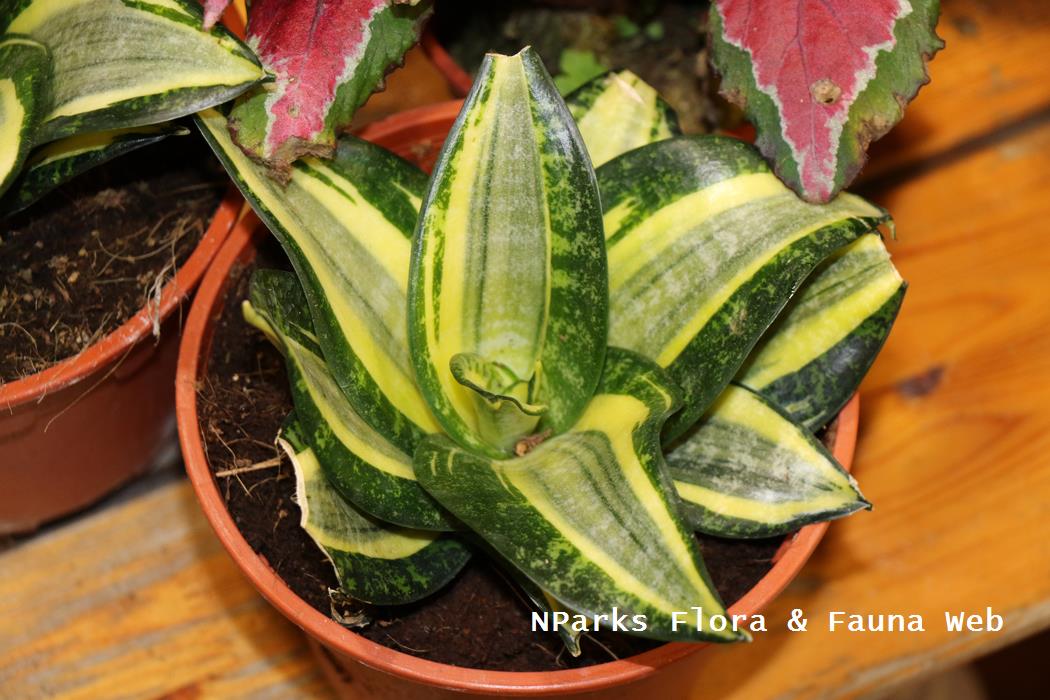
Name
Classifications and Characteristics
| Plant Division | Angiosperms (Flowering Seed Plants) |
|---|---|
| Plant Growth Form | Tree |
| Lifespan (in Singapore) | Perennial |
| Mode of Nutrition | Autotrophic |
| Maximum Height | 6 m |
Biogeography
| Native Distribution | Peninsular Malaysia and Singapore |
|---|---|
| Native Habitat | Terrestrial |
| Preferred Climate Zone | Tropical |
| Local Conservation Status | Native to Singapore (Critically Endangered (CR)) |
Description and Ethnobotany
| Growth Form | It is a small tree up to 3–6 m tall. |
|---|---|
| Foliage | Its spirally arranged, stalked, leaves have leathery leaf blades that are usually sword-shaped, green above, light green below, narrowing to a pointed tip, with a narrowed base where it joins the stalk, and 60–90 by 5 cm. |
| Flowers | Its white flowers are 1.3 cm long, and occur in loose clusters of 2–4 in a branched inflorescence. |
| Fruit | Its fruits are round, 3-lobed, large, and orange. |
| Habitat | It grows in lowland forests. |
| Associated Fauna | Its flowers are insect-pollinated while its fruits and seeds are probably eaten and dispersed by birds or mammals. |
| Cultivation | It can be propagated by seed and stem cuttings. |
| Etymology | Greek dracaena, a dragon, referring to the dried red resin called dragon’s blood; Latin brachy, short; Greek stachys, possibly referring to the genus Stachys, which the plant resembles, especially its similar, but shorter, inflorescence |
Landscaping Features
| Desirable Plant Features | Ornamental Foliage |
|---|---|
| Landscape Uses | Parks & Gardens |
Plant Care and Propagation
| Light Preference | Semi-Shade |
|---|---|
| Water Preference | Moderate Water |
| Plant Growth Rate | Moderate |
References
| References | LaFrankie Jr., J. V.. 2010. Trees of Tropical Asia: An Illustrated Guide to Diversity.. Manilla.: Black Tree Publications, Inc.. 750 pp. Ridley, H. N.. 1924. The Flora of the Malay Peninsula, Vol. 4. . London: L. Reeve & Co., Ltd.. v + 383 pp. |
|---|
Image Repository
Others
| Master ID | 33738 |
|---|---|
| Species ID | 8152 |
| Flora Disclaimer | The information in this website has been compiled from reliable sources, such as reference works on medicinal plants. It is not a substitute for medical advice or treatment and NParks does not purport to provide any medical advice. Readers should always consult his/her physician before using or consuming a plant for medicinal purposes. |






